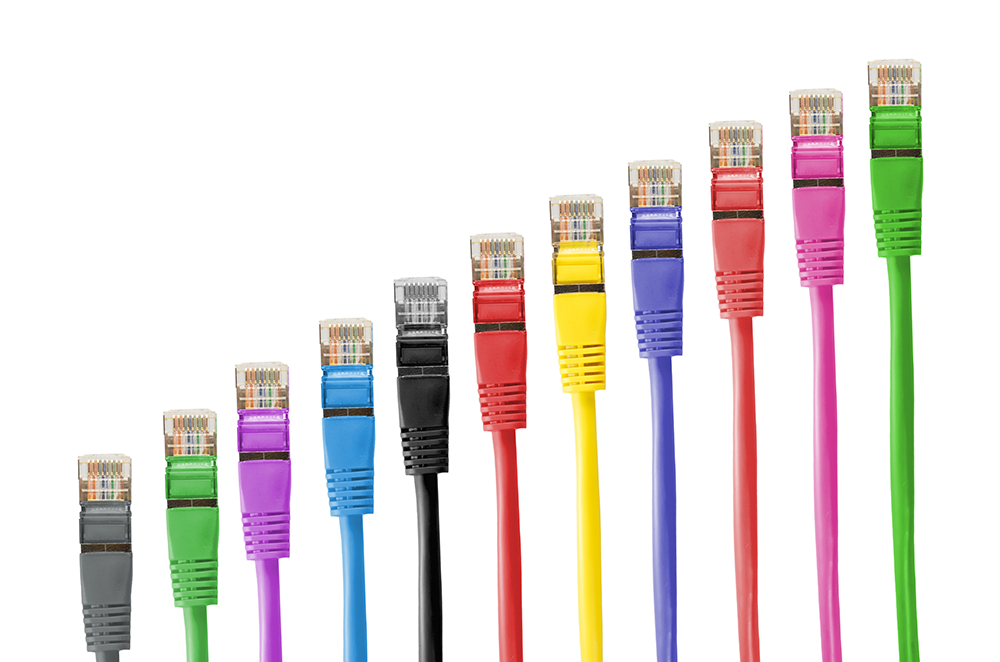Nulla facilisi. In vel mauris risus.
Praesent non velit ut libero condimentum pulvinar sed vitae tellus.
Vestibulum id tristique elit. Suspendisse posuere rutrum sodales. Nam id elit ac sem iaculis lacinia posuere vitae metus.

The use of Ethernet in industrial applications is rapidly growing due to its utility in accessing, monitoring, and tracking real-time data. This rise of Ethernet has led to the wide-spread usage of unmanaged switches.
Unmanaged switches have become a cornerstone device for industrial applications, especially for small to medium-sized businesses. Aside from being price competitive, they are best suited for applications with limited networking resources because they are easy to deploy. This is due to the plug-and-play nature of the unmanaged switch. Additionally, unmanaged switches are an important part of Ethernet network expansion for southbound devices. They work by enabling Ethernet devices to communicate with one another using auto-negotiation to determine common transition parameters such as speed, duplex mode, and flow control. As unmanaged switches play such an important role in network expansion, selecting the right model is crucial to enable smooth operations and to prevent complications that may arise as the network grows.
Think Long-Term
Many networks experience unforeseen issues when they are expanded, integrated with larger networks, or when changes are implemented. When selecting an unmanaged switch, think about the longevity of the switch and whether or not it would have to be replaced in the event of network expansion. Also, when thinking long-term, consider:
Data Prioritization
Real-time monitoring requires a constant and reliable stream of data from sensors and machines. It's a simple concept in theory, but can be difficult to implement on a crowded network. When selecting an unmanaged switch, it is important to consider features such as having QoS (Quality of Service). QoS helps manage network bandwidth by creating a prioritization standard to maintain network speeds and mitigate packet loss, delay, or jitter. Unmanaged QoS enabled switches provide reliable and critical data transmission for different applications.
.jpg)
Alarm Relay Outputs
Solving a problem becomes a lot easier when the process of troubleshooting is simplified. This is why an unmanaged switch must have relay outputs. These can help to identify problems such as power failure and port break alarm. Relay outputs can provide alerts via physical alarms such as a stack light or a buzzer.
Device Ruggedness
Consider the environment in which your device will live. While some network infrastructure will live in temperate office buildings, many others will be located in harsh environments. For those, look into industrial-grade unmanaged switches. They are built to operate at extreme temperatures, are EMC resistant, and support dual power input. Additionally, some applications will require that products have specific market dependent certifications proving industrial durability.
.jpg)
EDS-2010/2018-ML Series
If you need an unmanaged switch but are unsure of where to start, we recommend the EDS-2010-ML or the EDS-2018-ML depending on your port requirements. The EDS-2010/2018-ML series of industrial Ethernet switches have an array of 10/100M copper ports and 10/100/1000BaseT(X) or 100/1000BaseSFP combo ports, which are ideal for applications that require high-bandwidth data convergence. Moreover, to provide greater support for use in networks running many applications, these unmanaged switches also allows users to enable or disable the Quality of Service (QoS) function, broadcast storm protection, and port break alarm function with DIP switches on the outer panel.
The EDS-2010/2018-ML Series has 12/24/48 VDC redundant power inputs, DIN-rail mounting, and high-level EMI/EMC capability. In addition to its compact size, the EDS-2010/2018-ML Series has passed a 100% burn-in test to ensure it will function reliably in the field. The EDS-2010/2018-ML Series has a standard operating temperature range of -10 to 60°C with wide-temperature (-40 to 75°C) models also available.
Highlights
To learn more about these switches, download the datasheets to the right or fill out the form for a price quote.
Learn more about the EDS-2010/2018-ML Series.
Recommended Links